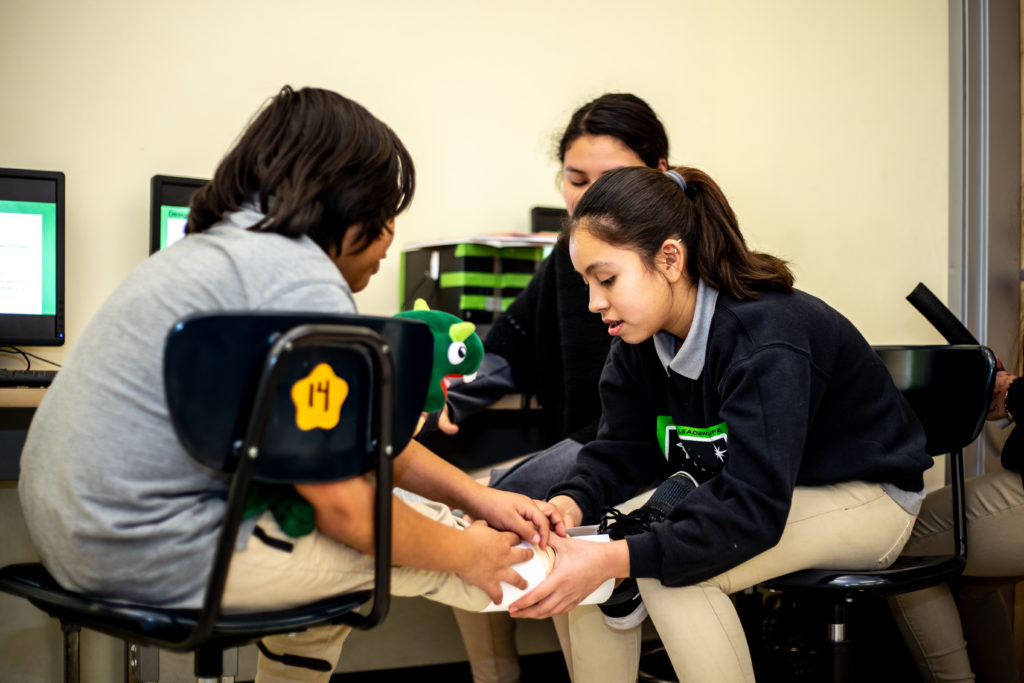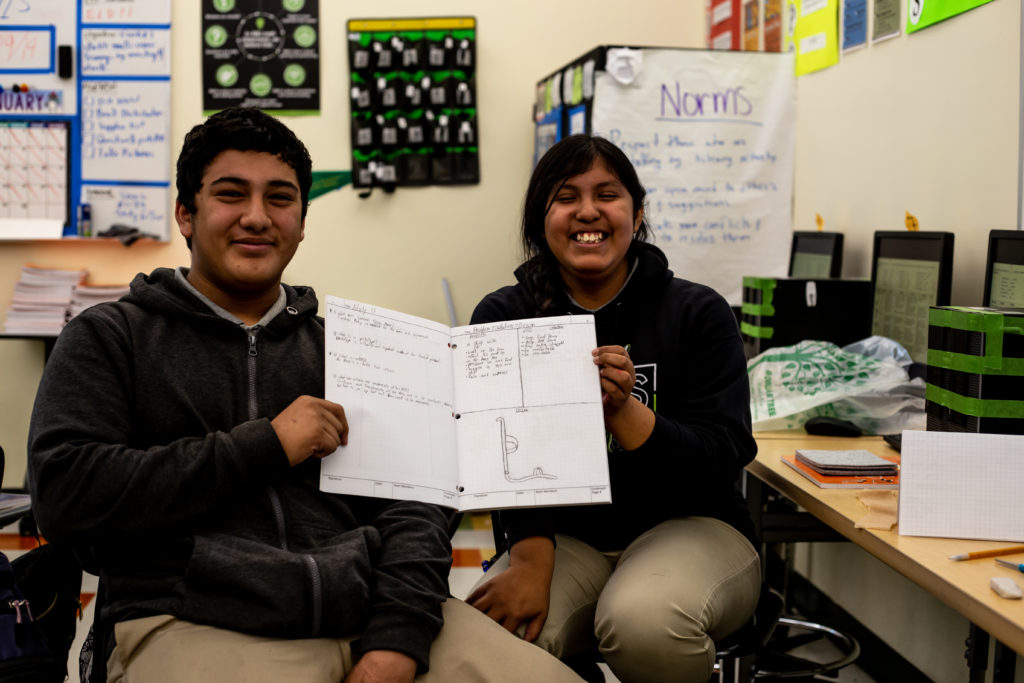Creating Middle School Pathways to STEM Careers

For far too long, schools have left a large number of students from underserved communities without the advanced skills and knowledge necessary for their lives after high school.
The National Science Foundation found that African Americans and Latinos combined only account for 11 percent of employment in Science and engineering careers. People of color are grossly underrepresented in STEM careers, that’s why at Green Dot we begin preparing our students in middle school, many of which have added 21st Century Learning Lab courses that utilize curriculum from Project Lead the Way. These courses provide students with an opportunity to learn computer science, engineering, and biomedical sciences in a fun and engaging way. In these courses, students are also developing their creativity, technology literacy skills, critical thinking and problem solving skills. “Across our middle schools we are seeing students excited about what they're doing, they see a clear connection between the work they're doing in class and real world problems and careers,” said Phillip Parker, Green Dot curriculum specialist. “Through this curriculum our students are developing the 21st Century skills missing in many college graduates.”
Ankle-Foot Orthosis and Movement-Responsive Devices
This semester Ánimo Mae Jemison Charter Middle School (AMJ) students began a unit that provides them with an opportunity to develop “design and engineering solutions” to known problems, like the lack of assistive technology, pollution, and disease. In this unit, students are designing and will eventually build an ankle-foot orthosis (AFO) for a child with cerebral palsy, a neurological disorder that affects a person’s movement.

“They are very mindful-- they understand that there are people living with these conditions and are whole heartedly working to create a solution,” said Mike Lopez, technology teacher at AMJ. “Students are learning how today’s sciences tackle challenges, while doing work that has a purpose and can help others.” To help with their final design and product, students are learning the fundamentals of thumbnail, orthographic, isometric, and perspective sketching in order to clearly communicate design ideas.
To create an orthotic that will support a person’s mobility, students are learning about cerebral palsy and how it affects children and adults around the world. “Our AFO is designed to help children and adults with cerebral palsy live better. The model is designed to keep the foot straight,” said Victor Ramirez, a sixth grader at AMJ. “These classes are a privilege because there are many students who don’t get these opportunities,” said Ramirez. “The projects are really fun. You get to design a model, use materials, create, and help people.”
Across town at Ánimo Jefferson Charter Middle School and Ánimo Ellen Ochoa Charter Middle School (AEO), students are participating in a “Computer Science for Innovators and Makers” unit, which asks them to develop a wearable safety device or a mechanical dispenser for a person or animal who needs assistance retrieving an object. Introducing this curriculum at five of our middle schools this year was made possible through a grant provided by Verizon Innovative Learning. This unit broadens student understanding of abstract computer science concepts through meaningful and authentic applications and exposes students to computer science as a means of analyzing and developing solutions to real world problems.

Preparing for Tomorrow's Challenges
Although not all students will seek a career in engineering or other sciences, creativity, critical thinking, problem solving, and teamwork are essential elements of well-rounded young people, and are named as highly in-demand soft skills by employers in all fields. In addition to these 21st Century Learning Labs, we have expanded our course offerings and curriculum to ensure our students are developing the necessary skills to achieve success academic endeavors and careers. For example, at AEO students have the opportunity to earn college credit like Introduction to Engineering and Manufacturing and Industrial Technology taught by East Los Angeles College (ELAC) professors. By providing students with access to college level courses and a rigorous STEM curriculum we are ensuring students enter high school with a deep understanding of foundational STEM practices.
“[The 21st Century Learning Lab] classes make me feel that even though we are young, we are capable of creating change and maybe the ideas we come up with can be used by experts one day,” reflected Anthony Rivera-Chavez, an eighth grader at AMJ. “Students are really enjoying the hands-on nature of the 21st Century Learning Lab courses,” said Lopez. “It’s real life learning applications and they love that they are free to create and apply their learning as they put their theories into practice.” Courses like these help middle school students integrate knowledge across all subjects and think in a more comprehensive way, a skill that will aid them on their road to college and beyond.
